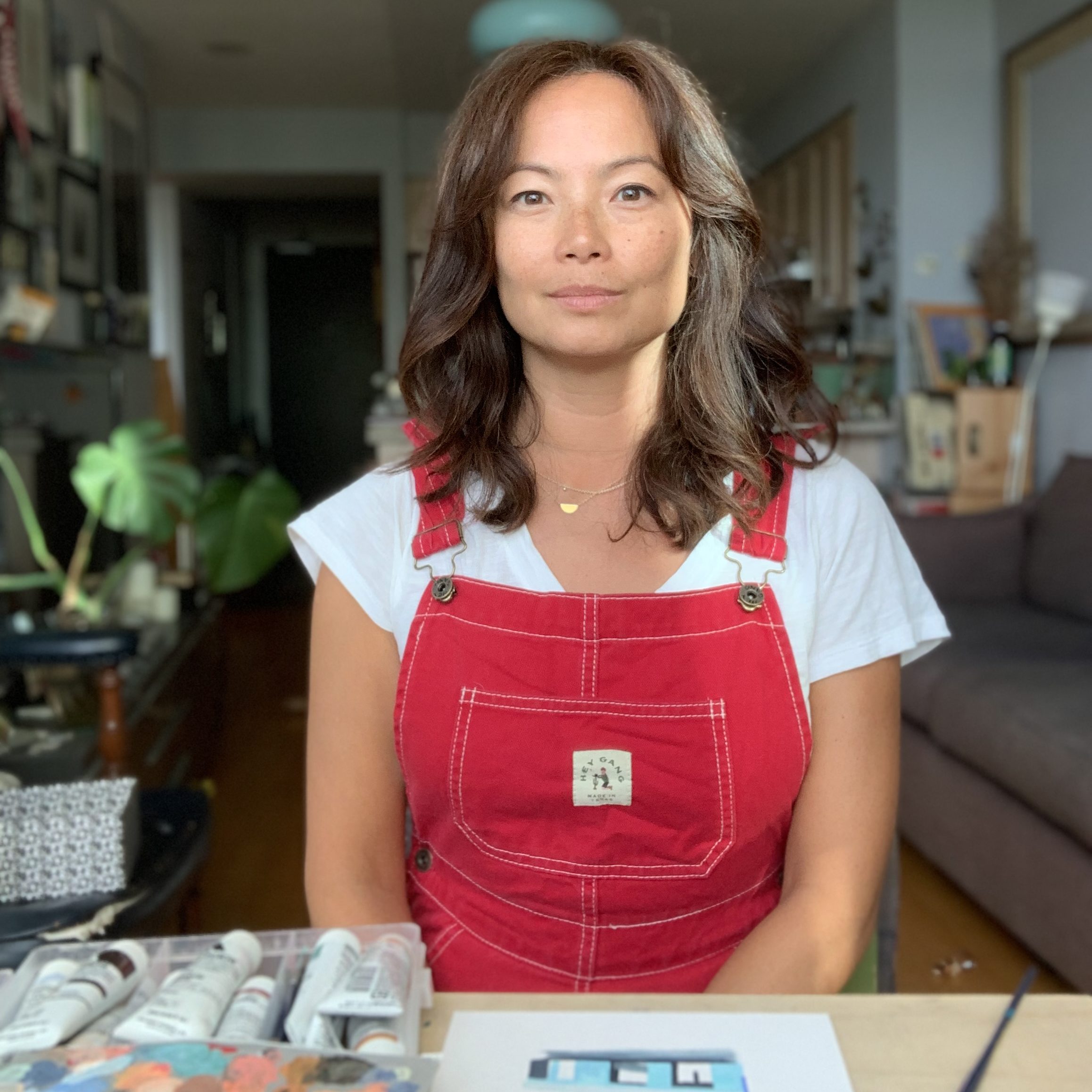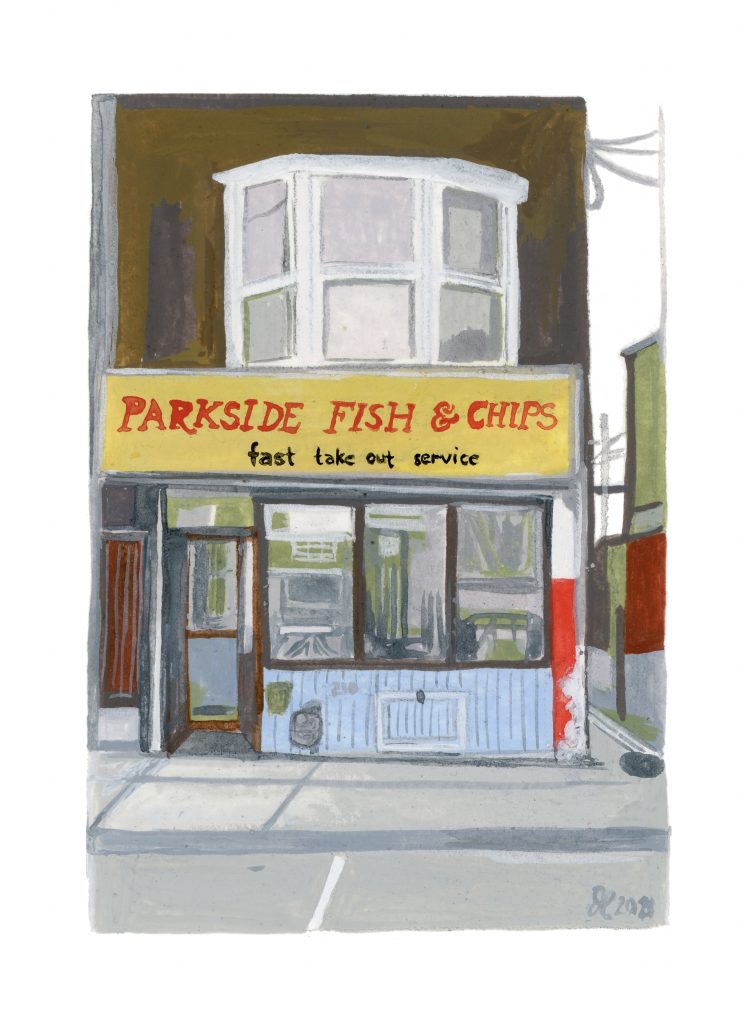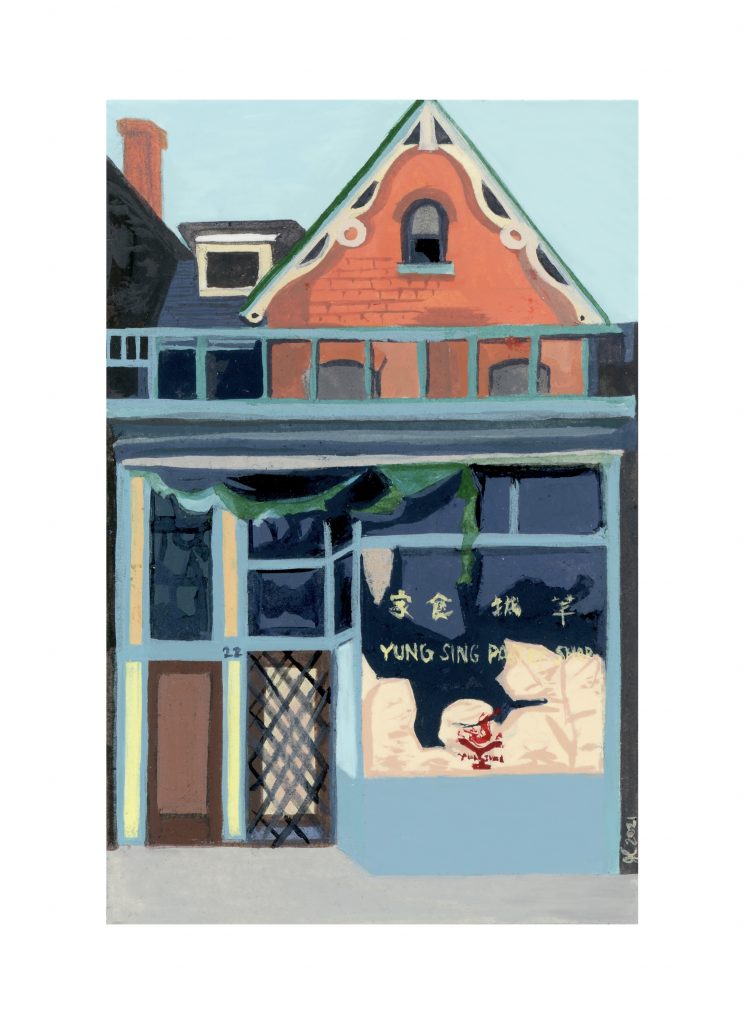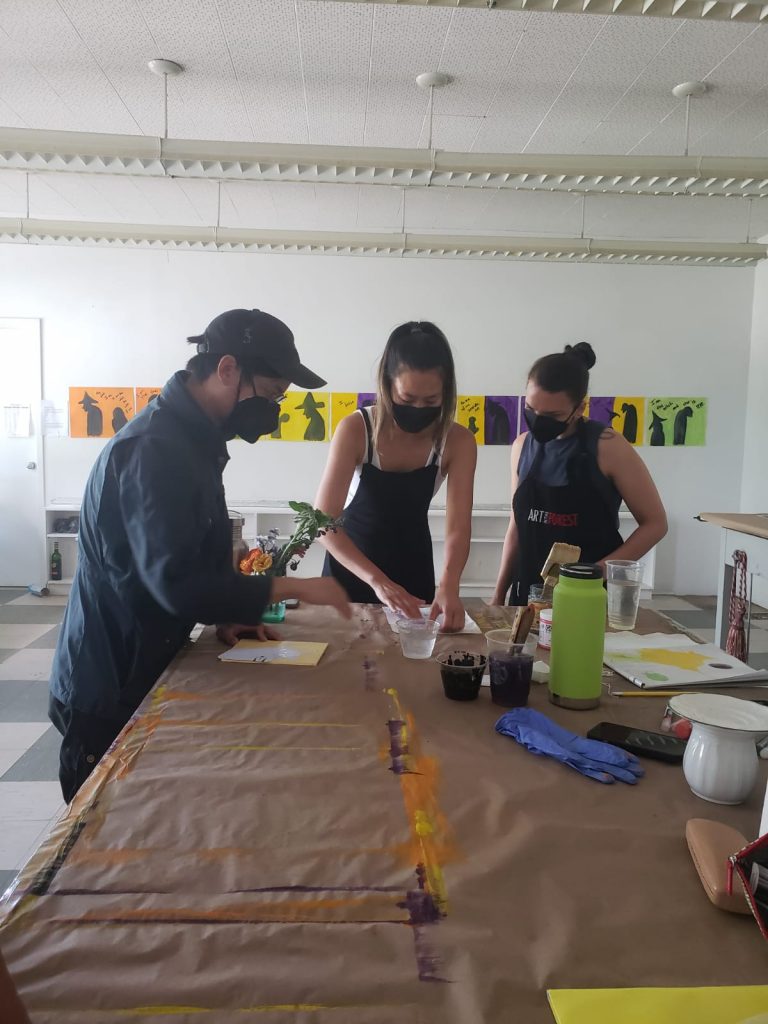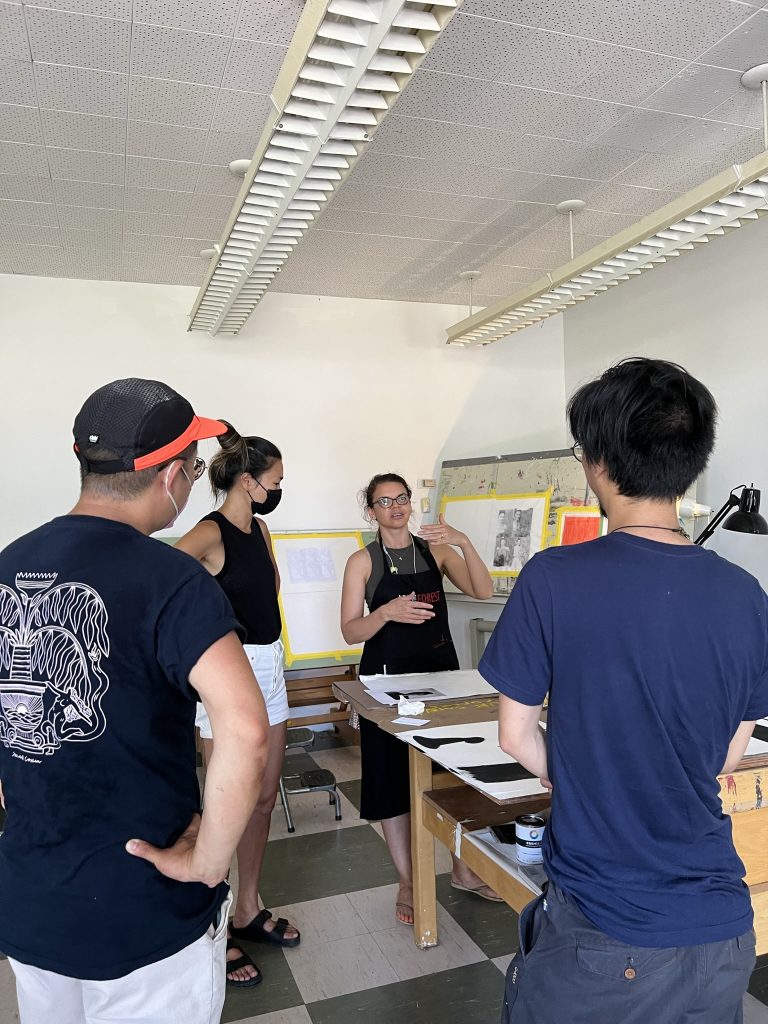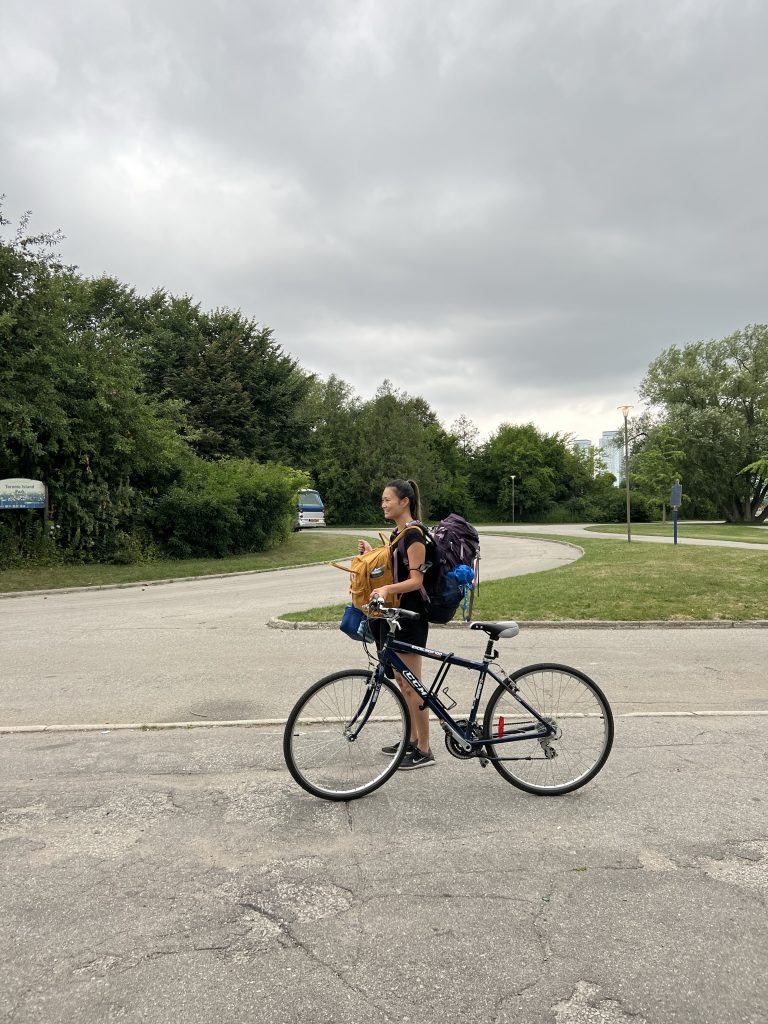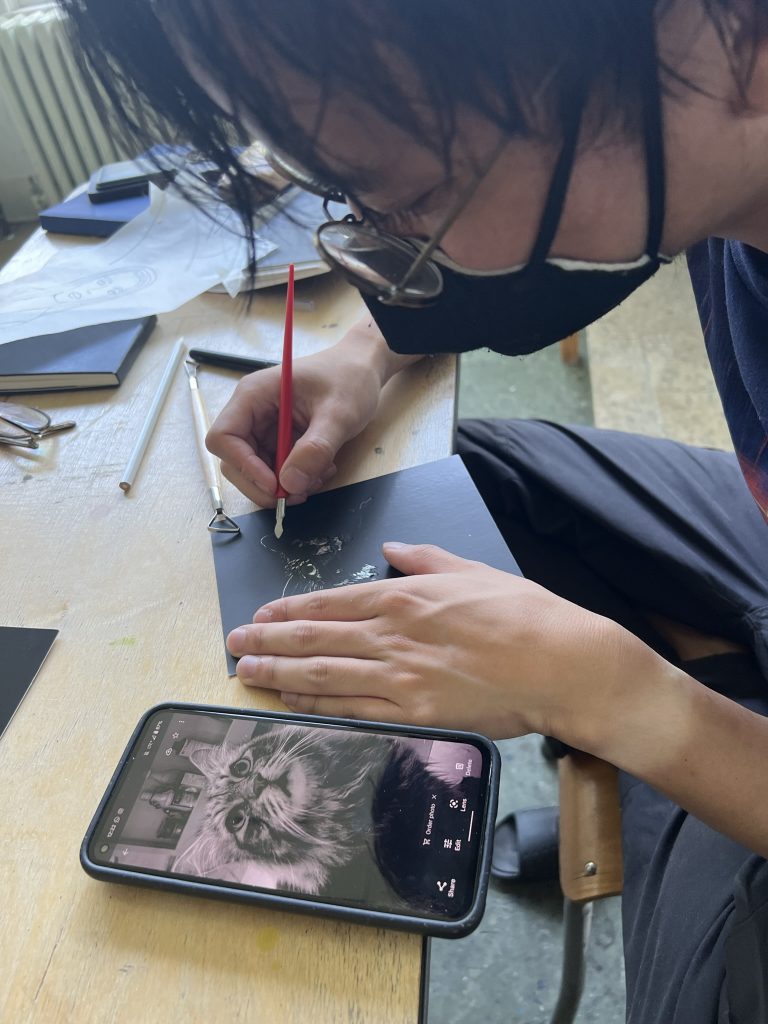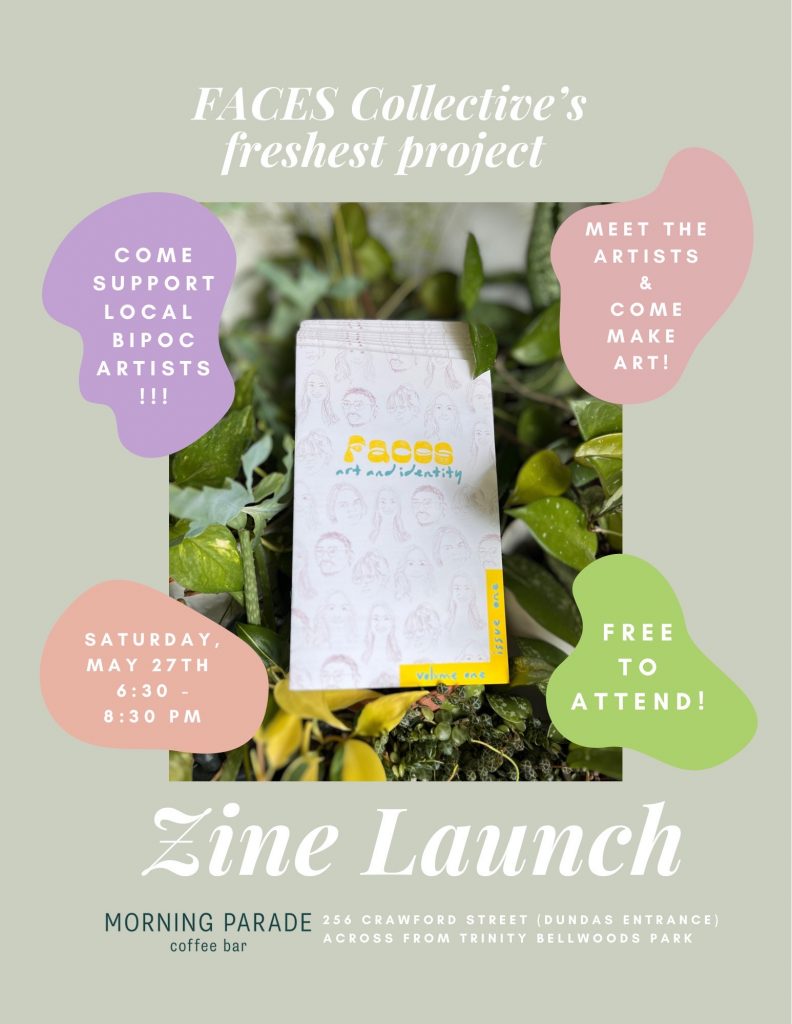FACES co-founder, lead artist and facilitator, Jamie Ly, experienced barriers herself as a diasporic artist growing up in Toronto. As a child, Jamie loved any opportunities where she was able to create and paint; growing up with encouragement from her mother to take extracurricular music and visual art classes.
The resources and support to follow the path as professional artist were unknown to Jamie and the arts sector was seen as an inaccessible, unstable, and financially insecure field of work. After having some security focusing on pursuing a “stable career” in Education for the last 12 years, Jamie saw a need to return to art making with more focus and dedication.
Through her multidisciplinary practice, Jamie explores themes of Chinese culture and celebrates the resiliency of Asian heritage with an emphasis on time, memory and nostalgia.
Jamie co-founded FACES Collective based in Toronto – an arts collective with a mandate to widen participation in the Arts sector for BIPOC artists who could not pursue a career in the Arts. FACES held their first fully funded art residency on the Island at Artscape Gibraltar Point in August 2022 with no cost to the artist participants.
Tell us a bit about your artist journey.
My art practice is a multidisciplinary one and has various facets.
As an educator who works with young children, I have noticed with admiration their playfulness and I like exploring various materials to instil this playfulness in my own art practice. I love making collage, working with textiles, various paint mediums, and exploring digital illustration.
Yung Sing Pastry Shop, Jamie Ly, 2″ x 3″, Gouache on watercolour paper (right).
Currently, I have been working on miniature scale gouache paintings where I am researching and exploring themes of Chinese culture and experiences. The idea of documenting and preserving the past, the present, and imagining a socially just future drives me as an artist. I like weaving ideas of the past, present, and future into my artwork with a focus on preserving Asian-owned storefronts as a statement on the importance of history, legacy and memory. My goal with the series is to celebrate the resiliency of Asian heritage. This is tied to my own experience as a child of immigrants who came to Canada and became independent business owners.
When did you start imagining the FACES artist residency? And what motivated you to make it happen?
Being an Educator allows me to combine stability with my love for the Arts, along with community building, social justice, and anti-racism work. Reflecting on my own experiences and barriers, I had always dreamed of being a professional artist and to have residency opportunities. When I was looking at options for myself, I noticed the lack of support for BIPOC artists which then jumpstarted my vision to create opportunities and dismantle barriers for those who experienced and faced similar lived experiences through a collective and residency program.
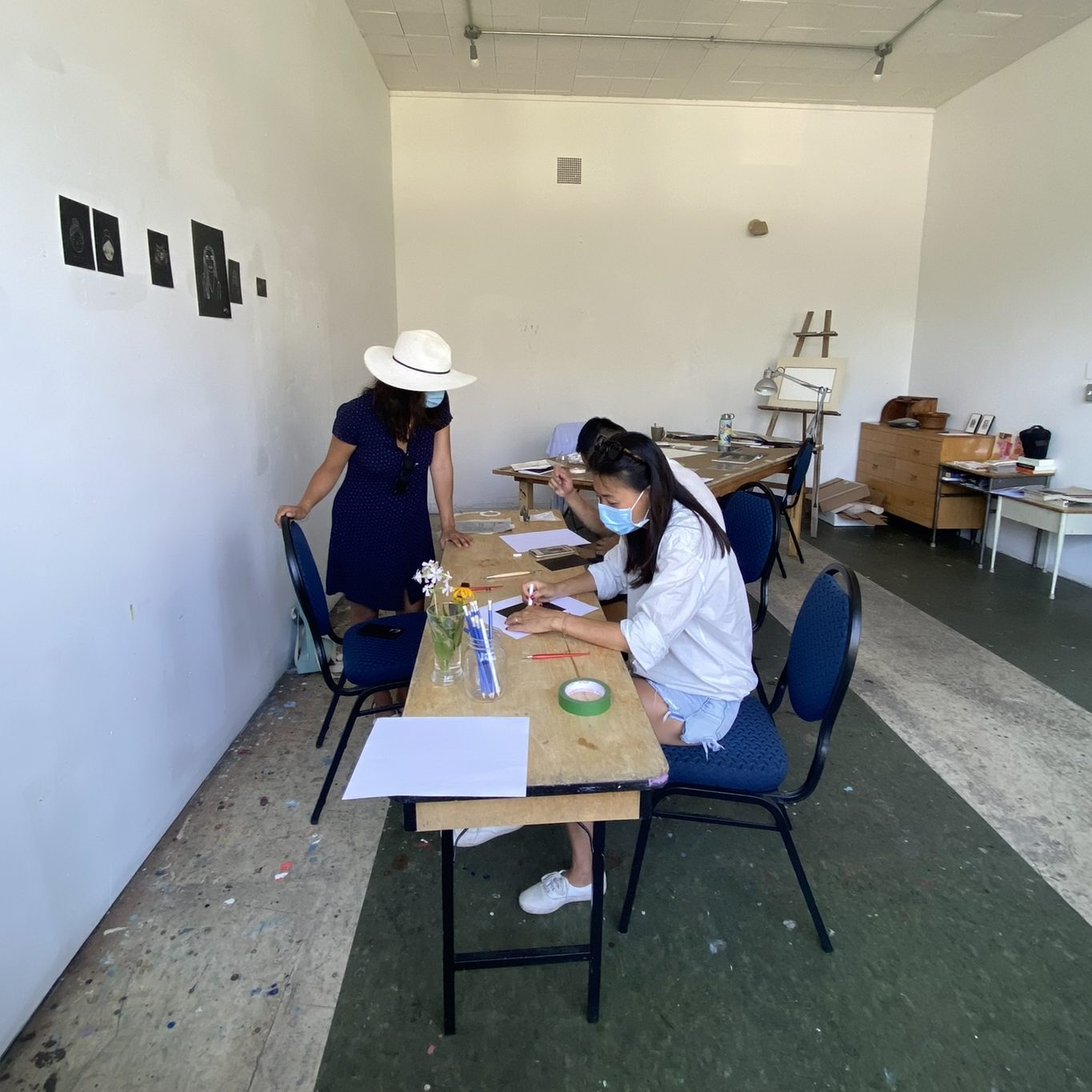
I reached out to Sarah Cullen, a contemporary visual artist, to be a partner and mentor as she has a wealth of knowledge and experience facilitating programming with a focus on challenging and re-defining the art community through her MOTHRA collective and residency program. Together, we founded FACES with a vision to better understand what barriers BIPOC artists face while creating a community where there would be support and space for art making and celebration of joy.
What was the greatest challenge with making your vision for the residency a reality?
The greatest challenge in making the FACES residency a reality was and still is, financial support. I have this vision that I know could service many.
Having programming that is fully funded would provide a supportive space for BIPOC artists – much needed to even the playing field for BIPOC artists who continue to be underserved. While there are many challenges and barriers that face everyone working in the arts, for BIPOC artists, there is the extra layer of systemic barriers that present itself that continues to exist.
The financial barrier is one that is complicated by various factors for BIPOC artists. For example, for many BIPOC artists, their family’s refugee and immigrant journeys can affect the ability to build generational wealth and as a result, create pressures to pursue strategies to be more financially stable which often do not coincide with pursuing a career as a professional artist.
We were lucky to have received funding from OAC for our first residency program. FACES is always looking for ways to dismantle the financial barrier for artists when they can. The reality is that our residency budget was not fully covered by our award amount and we have to rely on applying to multiple grant opportunities or fundraise on our own and find creative ways to ensure the possibility to deliver the program.
The future and sustainability of FACES currently has the passion and energy behind it and we continue to look for ways to be financially sustainable so that we can continue to service the need to support BIPOC artists and provide opportunities for more individuals. The struggle is balancing the sustainability with the reality of bills and capitalism. As it stands, we’re unsure how to continue to provide fully funded experiences without proper financial support and grant awards.
I recently read about artists being provided a base salary in order to help eliminate some financial pressures so that artmaking could be the focus. Diana Chan McNally made some thoughtful and important points via Twitter about how granting systems can be problematic for BIPOC artists. McNally points out how the current system is essentially asking BIPOC artists to prove their marginalisation and compete to be marginalised enough, placing the pressure on BIPOC artists. It has been making me think about the unpaid labour artists endure to compete for the chance of getting funding, often while holding down a primary job to support the creative artmaking.
Artscape Gibraltar Point is such an inspiring location. Why, and how, did the location shape or impact the residency experience? What did you love about this place? And any funny quirks about it?
AGP certainly is an inspiring location and I think the location was very central in the impact we had for our artists. Being in such close proximity to the city, yet feeling like we were a world away allowed our participants to escape and find a restorative practice in their art making. The environment of the Island naturally lends itself to be inspiring. The calmness and sounds of nature that surrounds the site is quite healing in the sense that there is no distraction that you might find in day to day life in the city. There are hardly any cars on the island and so the elimination of the noise is quite peaceful. The best part is that because AGP is an overnight residency facility, our artists get to experience the island in it’s off peak hours. The Island is the best in the early hours of dawn, or evenings and nights when all the tourists have gone home. Centreville is fun to walk through when completely deserted and watching the sunrise on the beach without a soul around is revitalizing. It’s a great way to start a day of art making.
You have a background in education, of course. How was it creating the plan or structure to the FACES artist residency? What was your vision for how it should take shape?
My teaching philosophy is rooted in authenticity and hands on play and inquiry – this is the basis of the Full Day Kindergarten Program and my own influence from the Reggio Emilia pedagogy. Asking open ended questions and providing open ended materials and prompts for art making is a large part of how I wanted to structure the residency and our conversations together. I thought it was really important to centre our conversations in an open ended way so that what we learned together was guided by authentic conversations.
What was a highlight for you during the week?
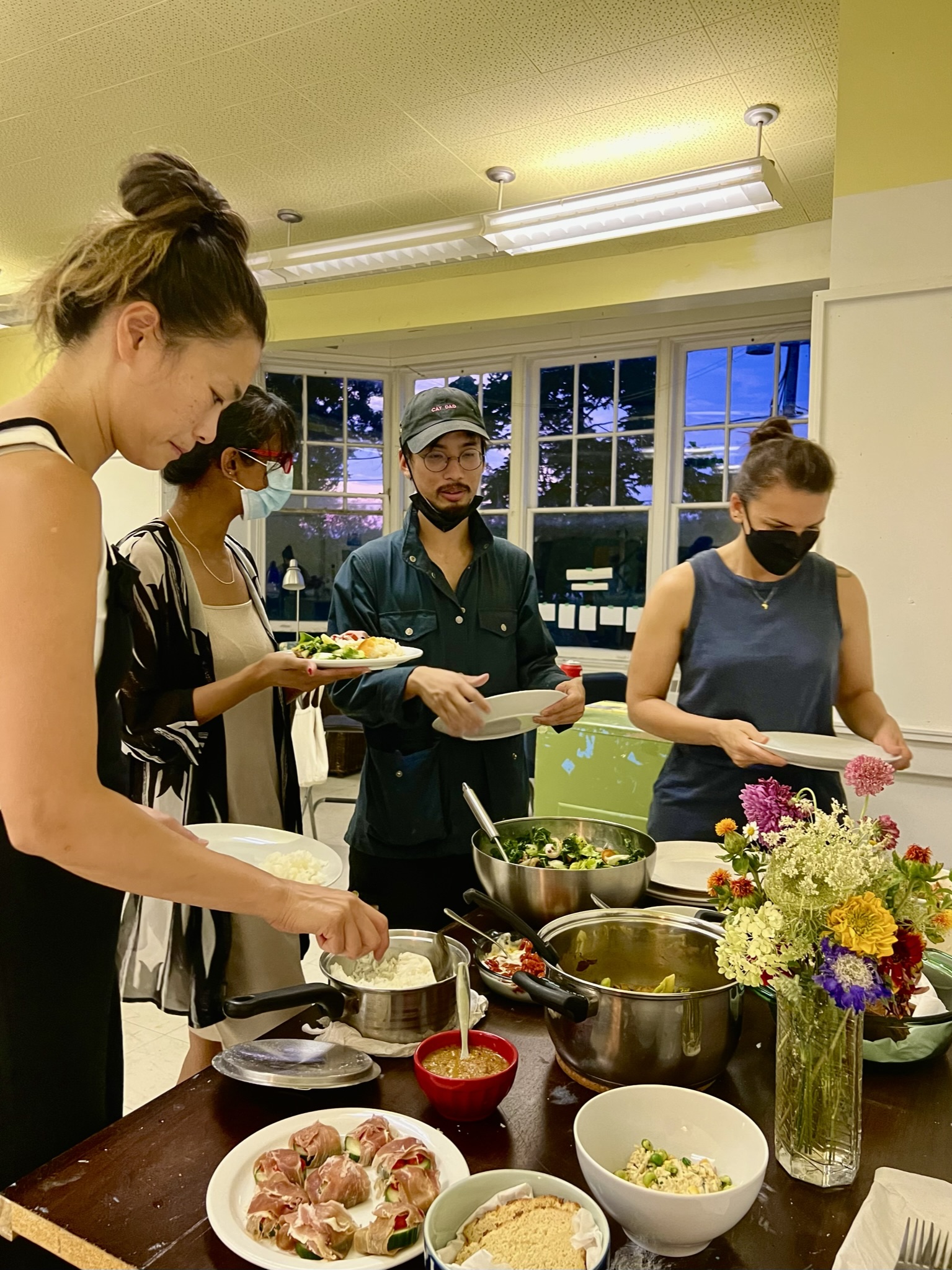
Definitely the building of community and relationship between the participants and seeing the positive possibilities when artists are given time and space to create and engage in conversations together. Since the residency has ended, many of us continue to keep in touch almost daily, sharing ideas and resources and words of support – this is not only a highlight but an invaluable outcome I am so grateful for. Our residency was not just a program but has grown and breathed life into our collective.
The artists all came with varying backgrounds and experience. What were some of the varying ways in which artists used their time there?
It was so wonderful to see the different processes. Some got up really early every day and had a set routine and was deep into art making before our communal breakfasts while others would set out for quiet and meditative walks to start their day. Walking around the Island seemed to be a commonality for all the artists – the only variable was when the walks were occurring. The art making sessions sometimes took play in studio while others made use of the outdoor space. It was really fun to see the experimental practices and experiences towards the latter half of the week as artists shared various techniques with one another and visited each other in their studios to learn from one another. This came about really naturally and it was lovely to see how collaborative the artists were in sharing their various ways of creating.
What was the greatest takeaway from this experience for you?
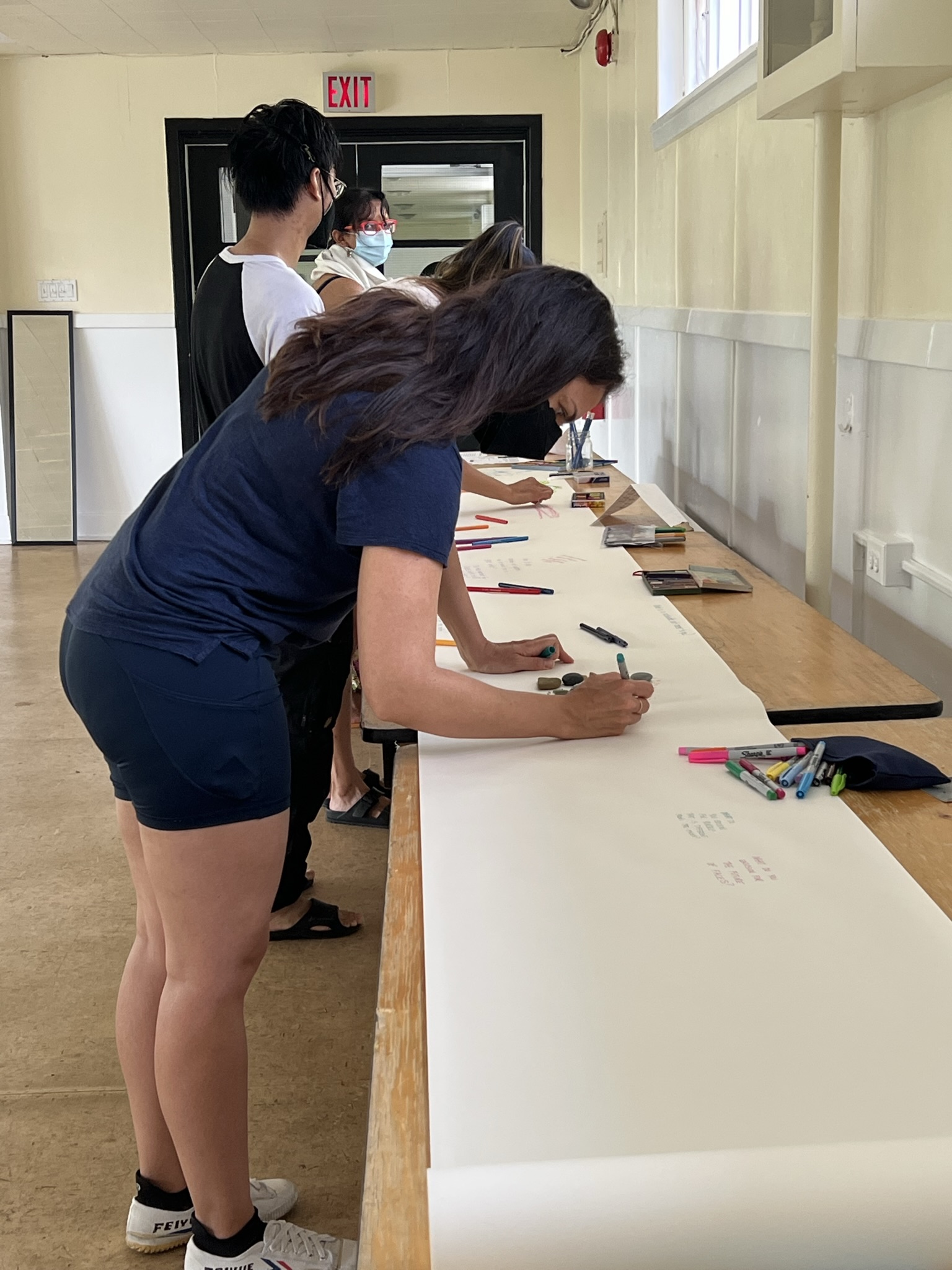
The greatest takeaway for me was seeing how valuable time together as artists can be and the shared priority amongst our participants about building community and legacy. The energy of the group really buzzed and the sharing of ideas has continued on – especially the idea of working together on future projects and initiatives to support more BIPOC artists. There is so much potential for greatness when individuals come together and have the space and time to work together, to converse and to just spend time together. It truly is invaluable and support for initiatives that allow artists to come together is needed.
Please tell us about what’s next for FACES, and you.
It’s been an exciting time post residency. Many of the FACES artists have actively pursued the next steps of their careers – applying for grants; finding various ways of exposing and sharing their art with the world. There have been several exhibits that FACES members have had since the residency week and conversations and collaboration continues to occur between members. It has been energising to see the artists go after their life long dreams!
One of our artists, Jeyolyn Christi, took on the initiative to start FACES Press as another means to help artists to share their work with the public. Jeyolyn actually just self published her first book – everyone should check it out. It’s a beautiful collection of Tamil migrant stories and photographs.
FACES has just wrapped up a zine which is called FACES Zine: Art & Identity. Within the issue, there are artworks featured that were created during our residency as well as some newer pieces that were created post-residency. We explore and reflect on some of the conversations and ideas that came about during our time together. There were 5 of us collective members who worked on this first issue and learned to create the risograph printed issue. This was a fun and exciting process of learning and continued to add to our skills development as artists – we really learned so much! It really would not have come together without the team effort. I hope we’ll be able to publish another issue. Until then, our first issue will be available for purchase in the coming weeks.
Sadly, FACES was unsuccessful in getting an OAC grant which would have helped to fund another residency program for FACES this year. As a result, we are putting the residency program on hold for now until we can figure a way to ensure the workshop facilitators are paid properly for their time and labour and to fund participants’ fees. I’m looking into getting a mentor that may help guide me with the future of FACES and to help me answer some burning questions I have:
1) Aside from grants, what are other avenues to explore to help with sustaining programming?
2) As I am interested in providing accessible programming to help engage BIPOC artists in order to help dismantle as many barriers as possible, how can I balance and continue to create these opportunities while also paying others and myself properly (i.e. CARFAC rates)?
3) I have lots of ideas for projects and events and have some supportive contacts and partners – I am wondering about best practices to ensure project management is organised, feasible and what makes the most sense to prolong these ideas as much as possible.
While the residency program is on hold, I hope to get creative with other forms of programming to continue to do the outreach work we’re passionate about – (perhaps a FACES podcast? Podcasting is something I’ve been interested in for a few years but never made the jump into. Accessibility and community building in the arts continues to be the focus and it seems like a good platform without a large startup cost. In the meantime, I am continuing to squeeze in art making for my personal practice – it’s been a few months since I’ve picked up a paintbrush so I’m looking forward to doing that again.
